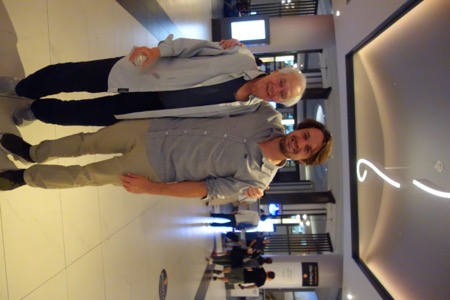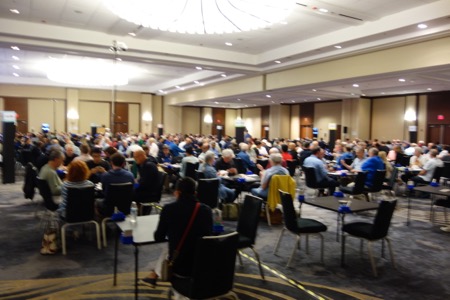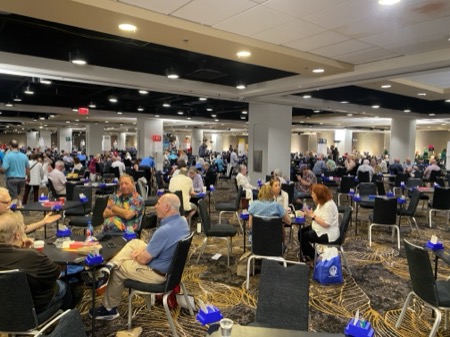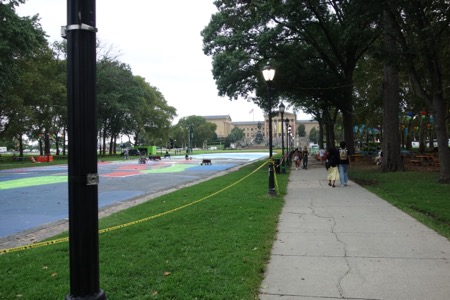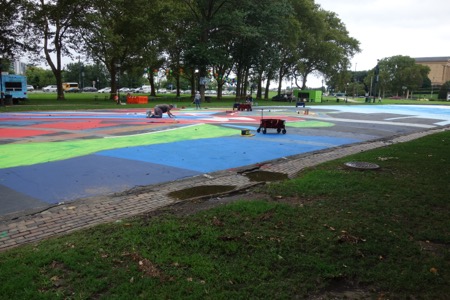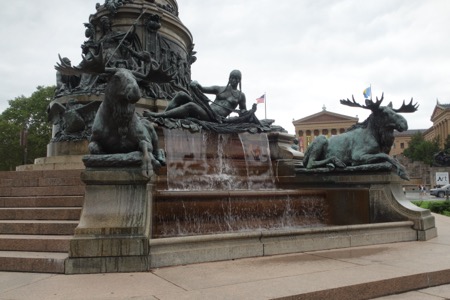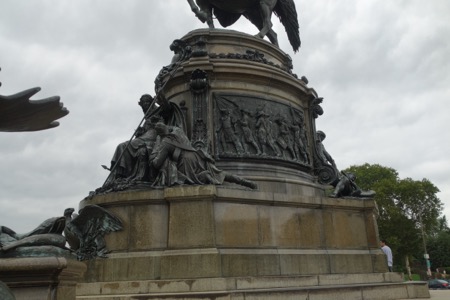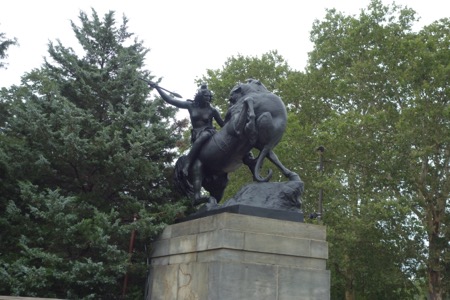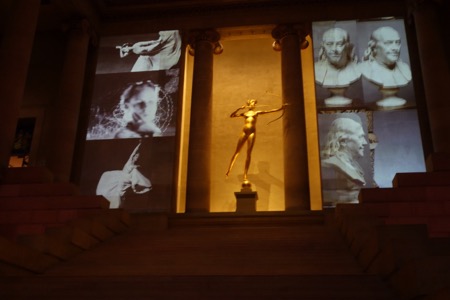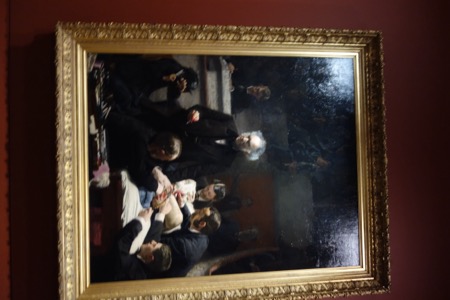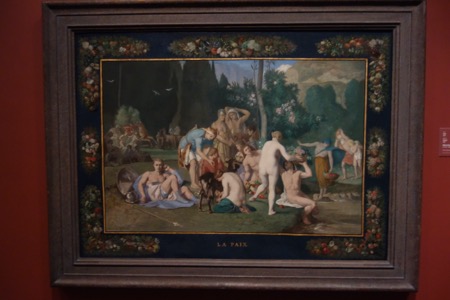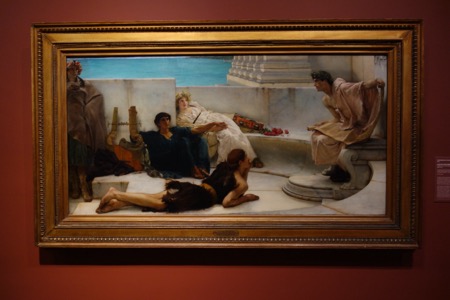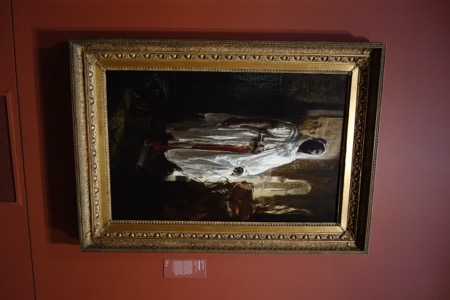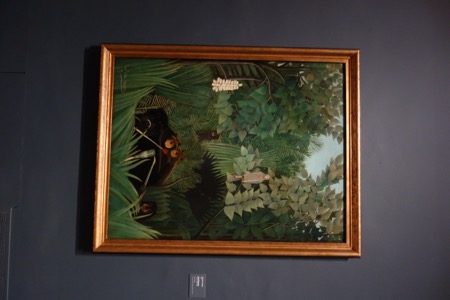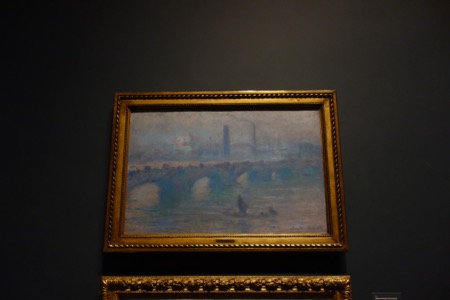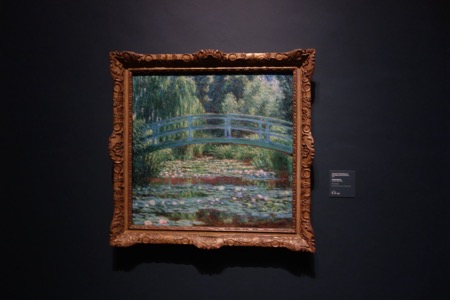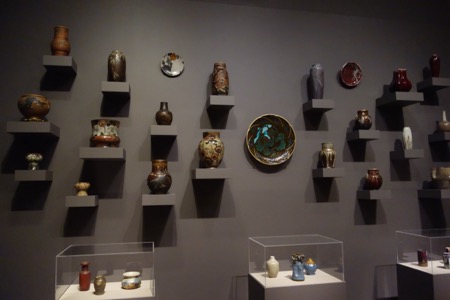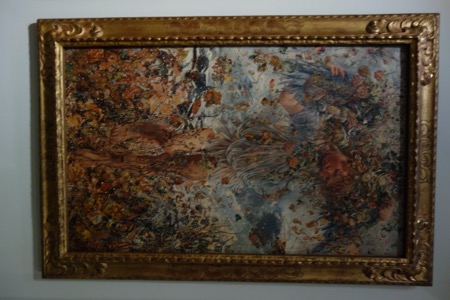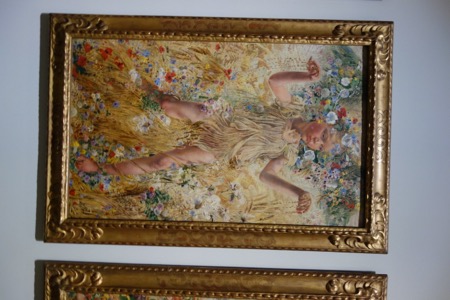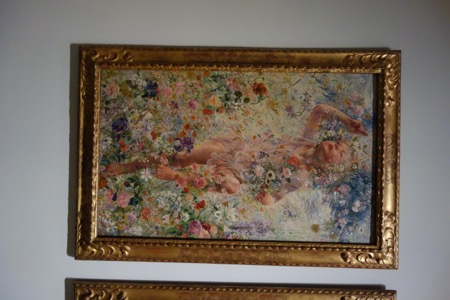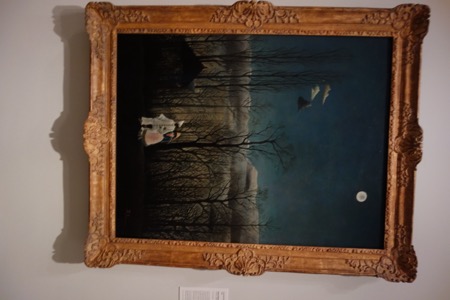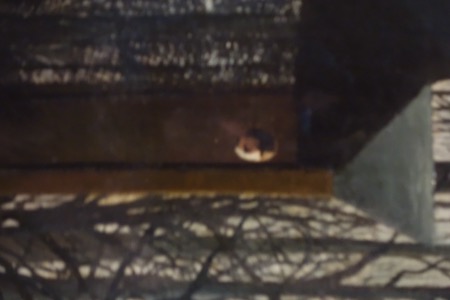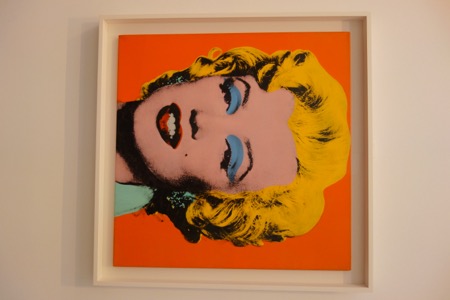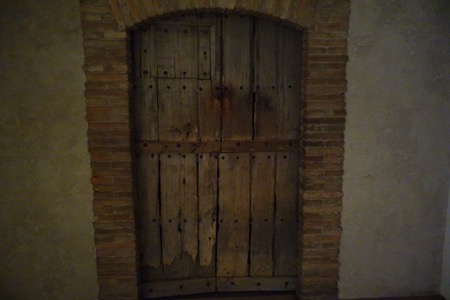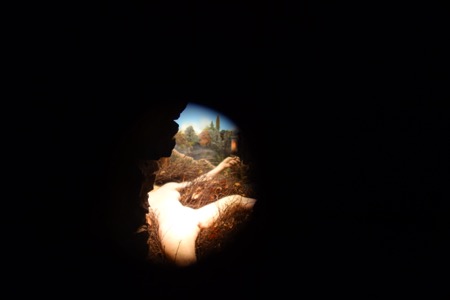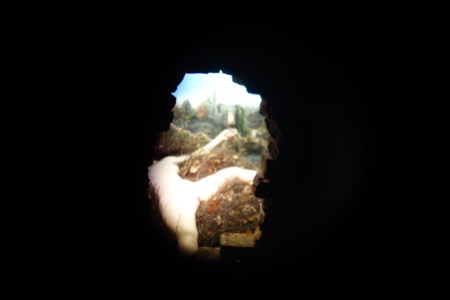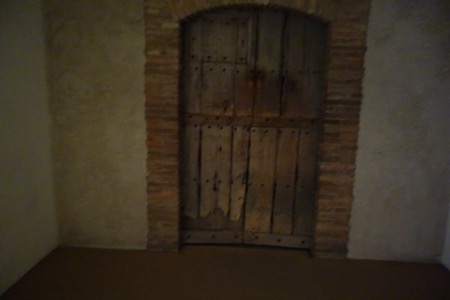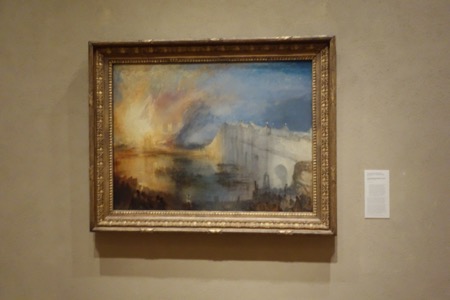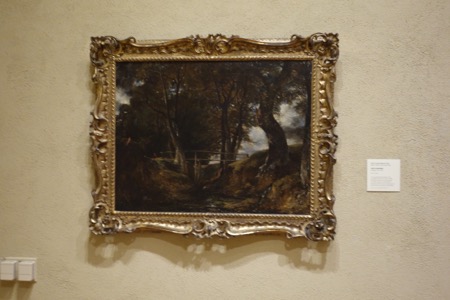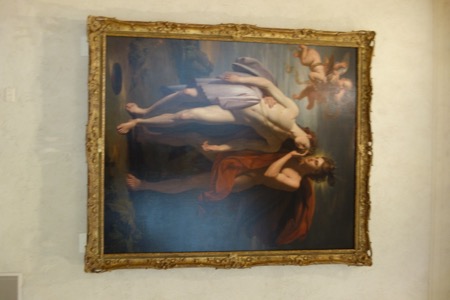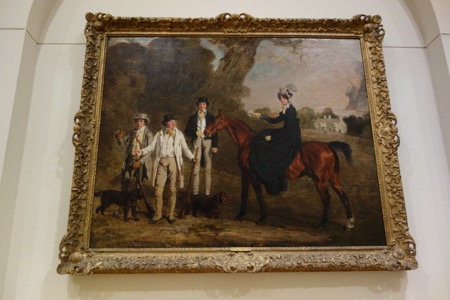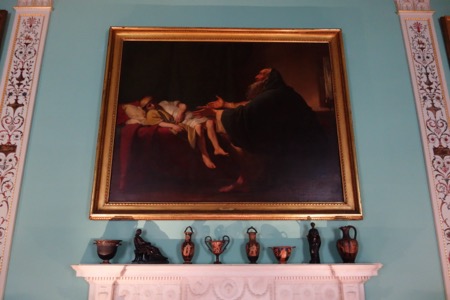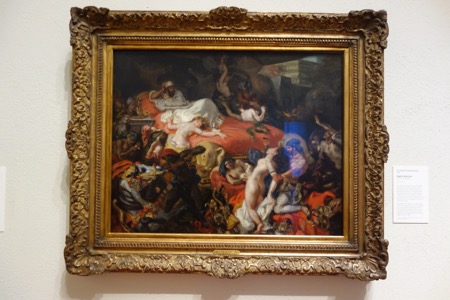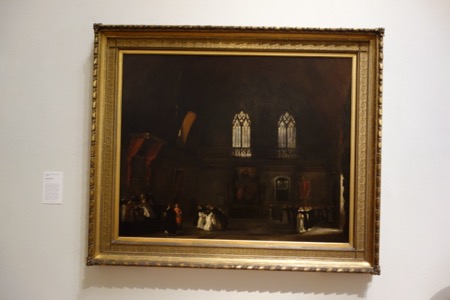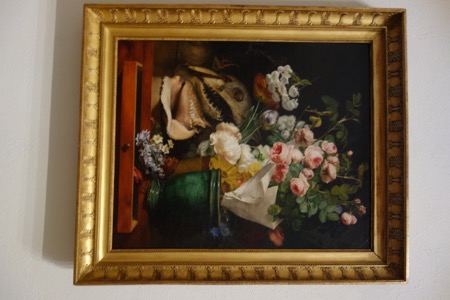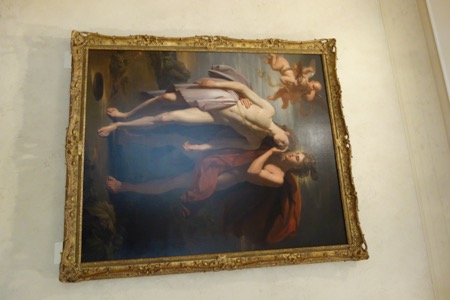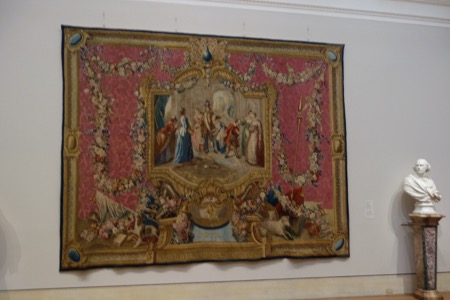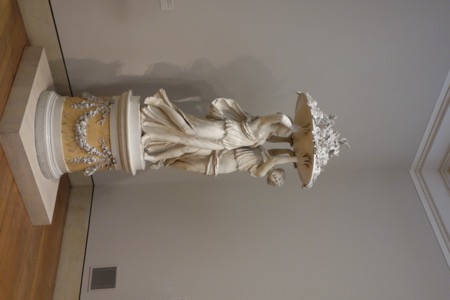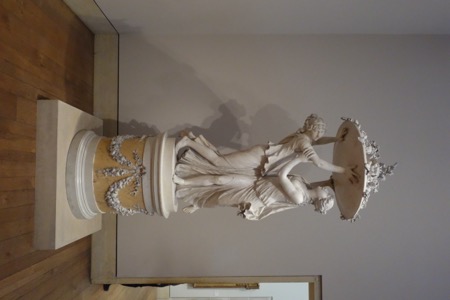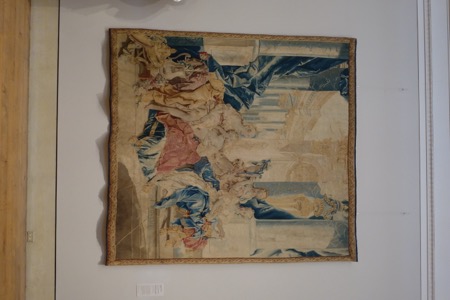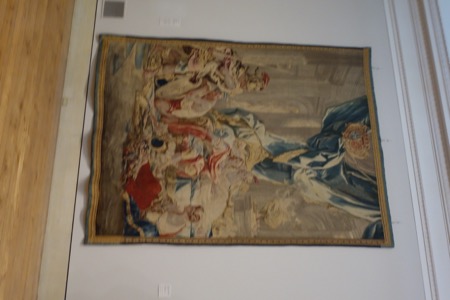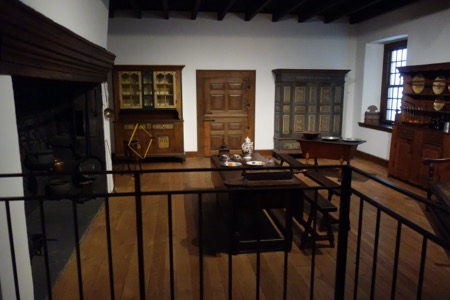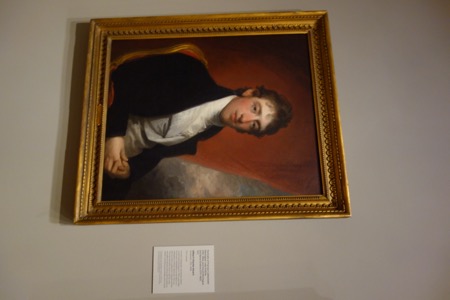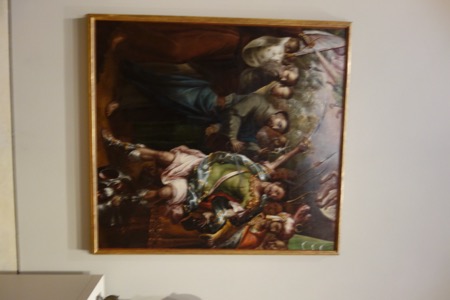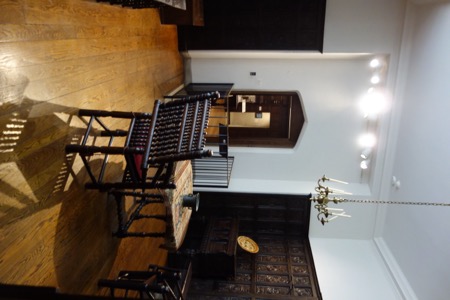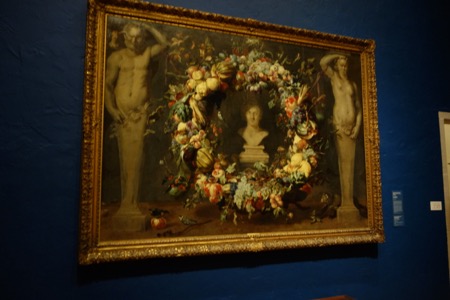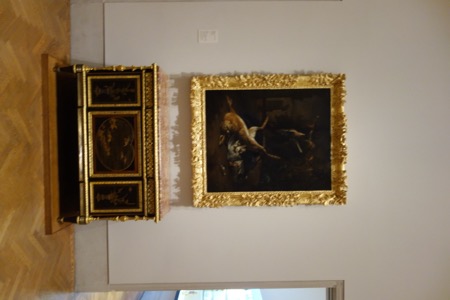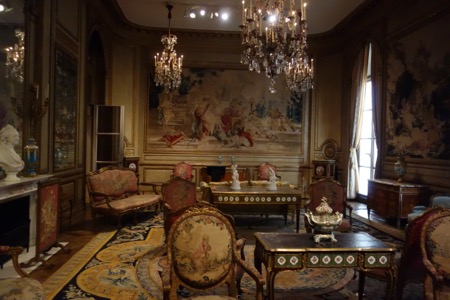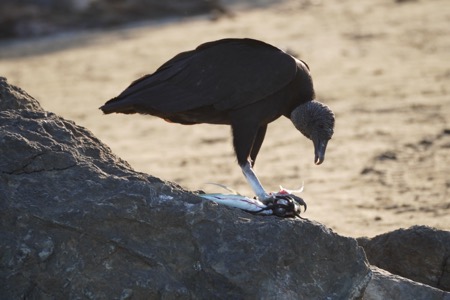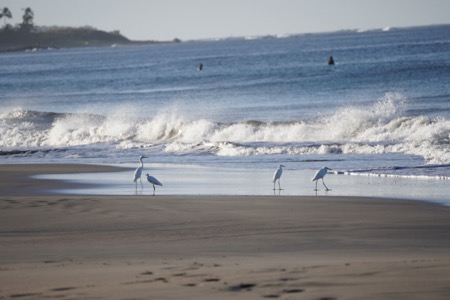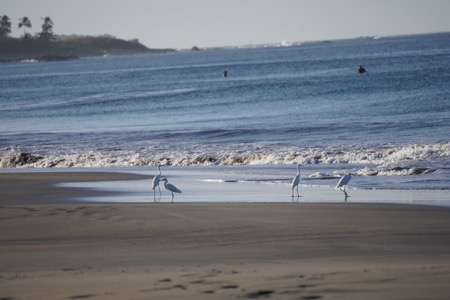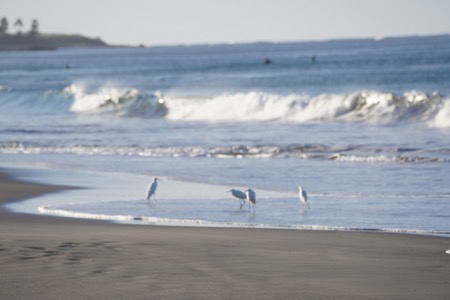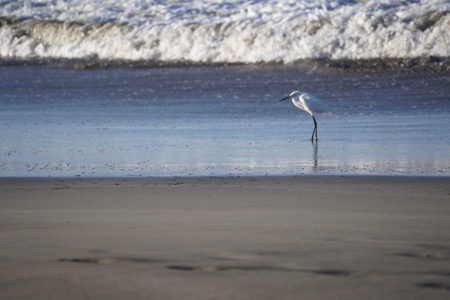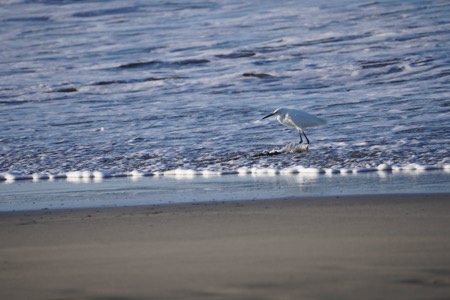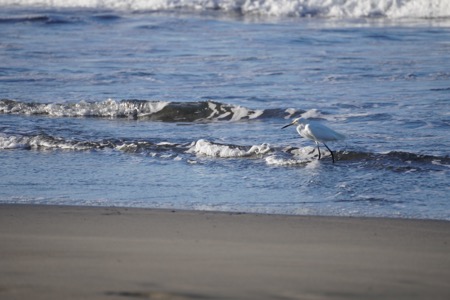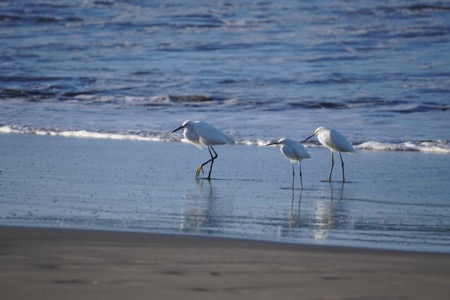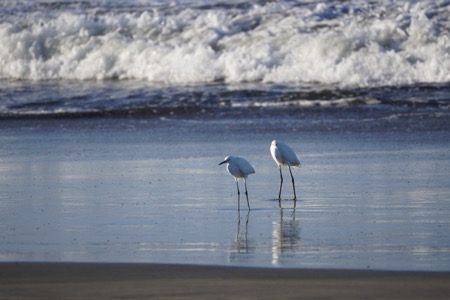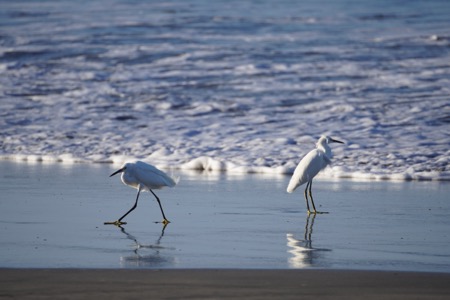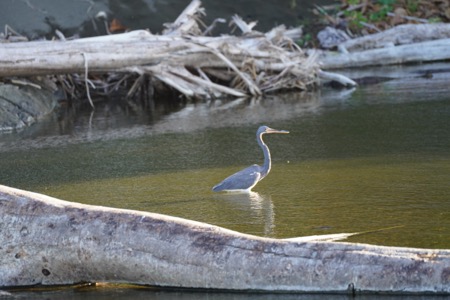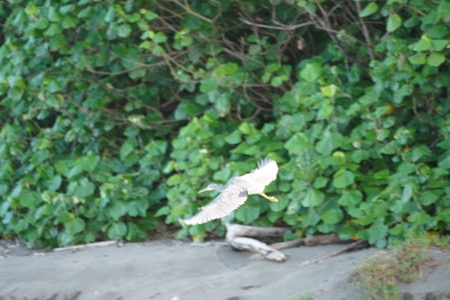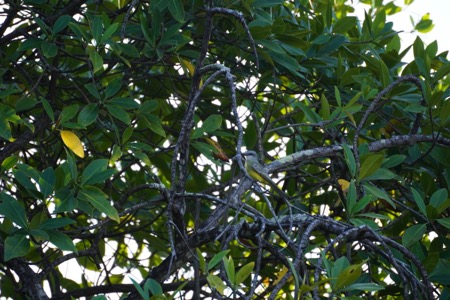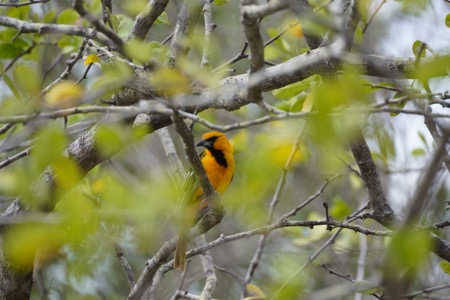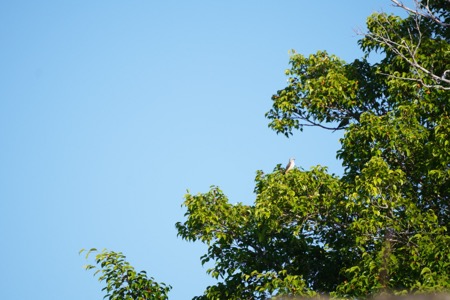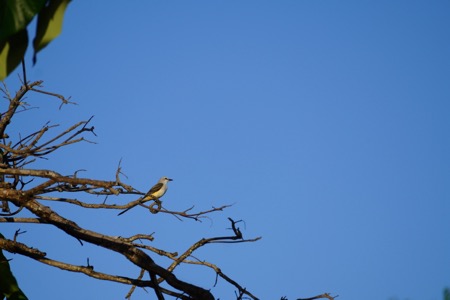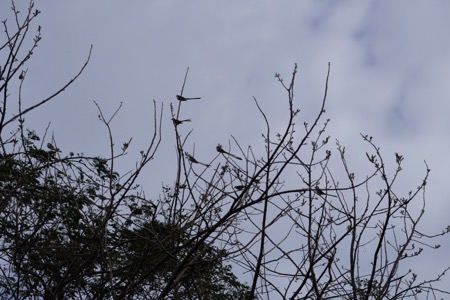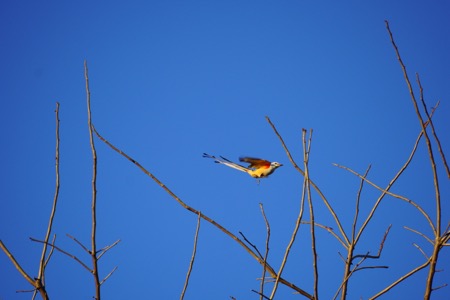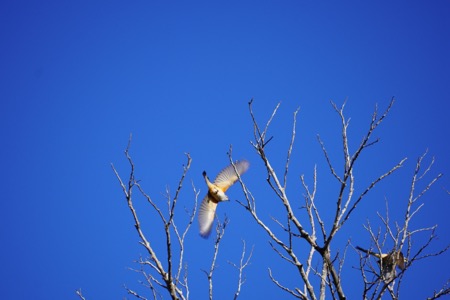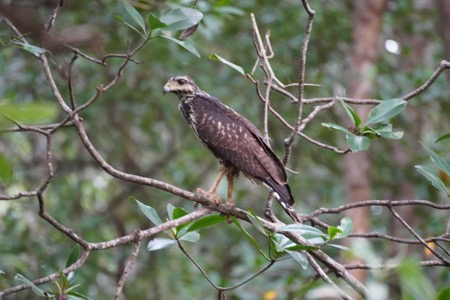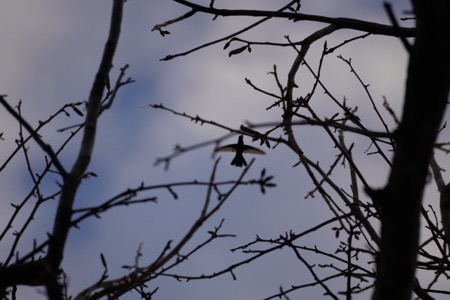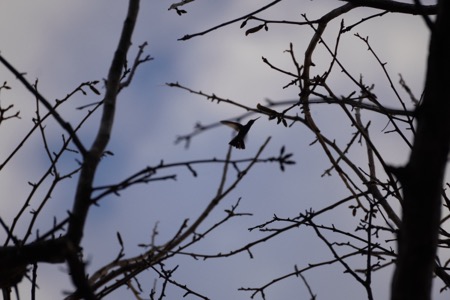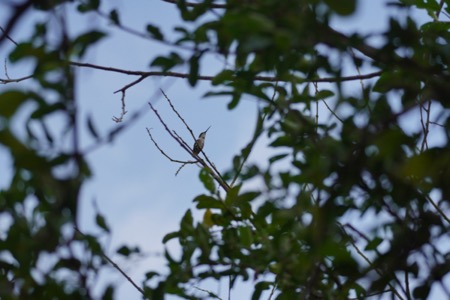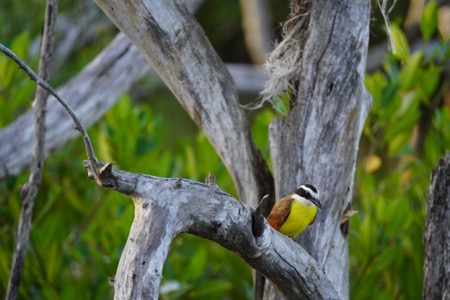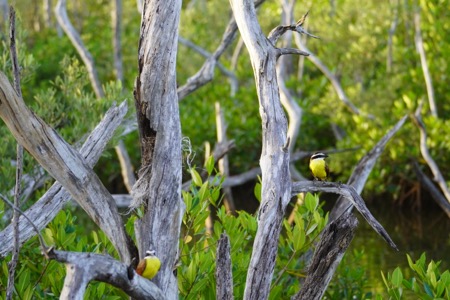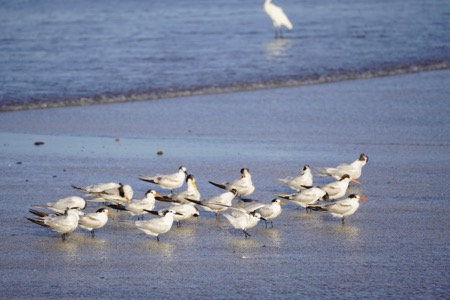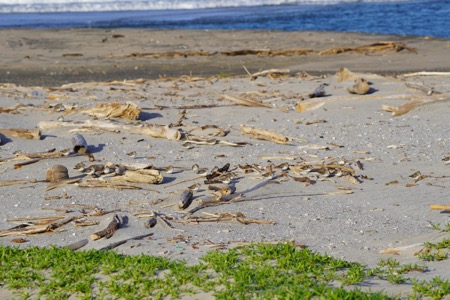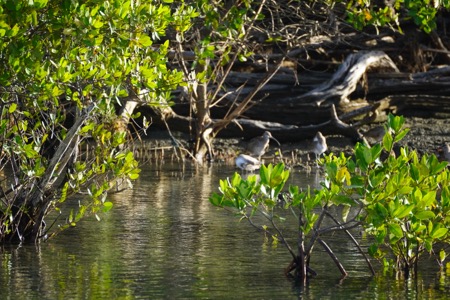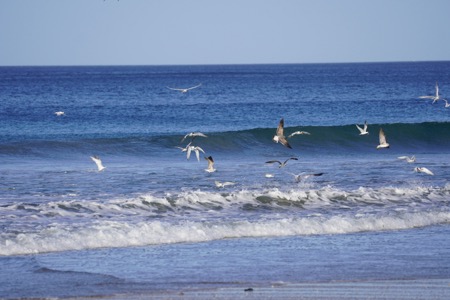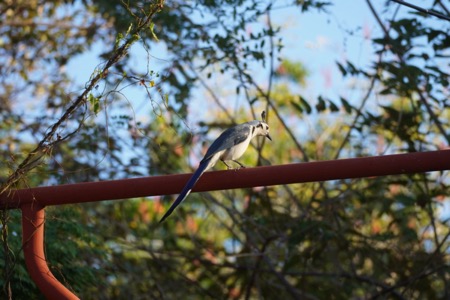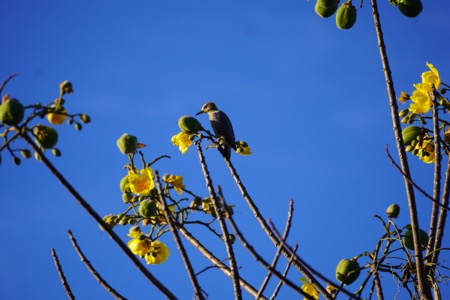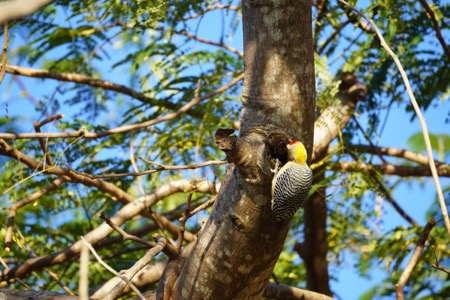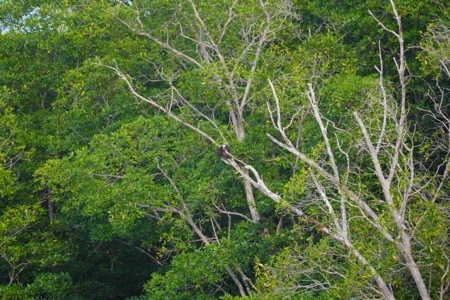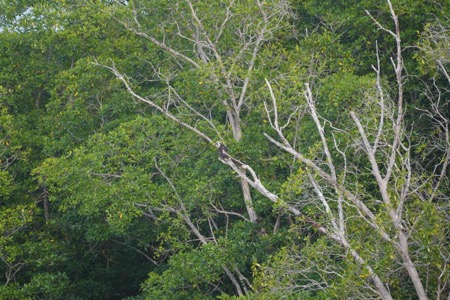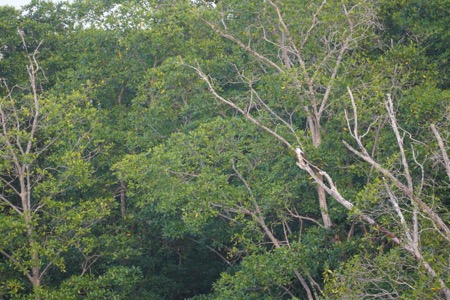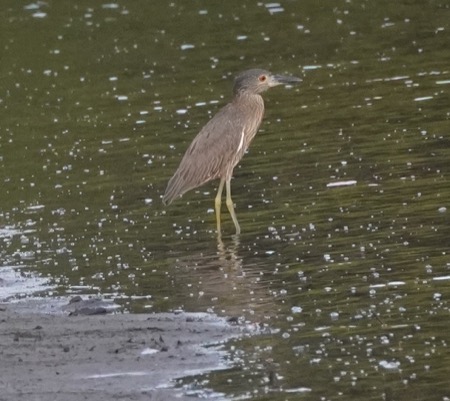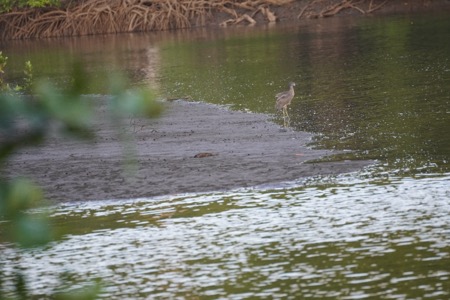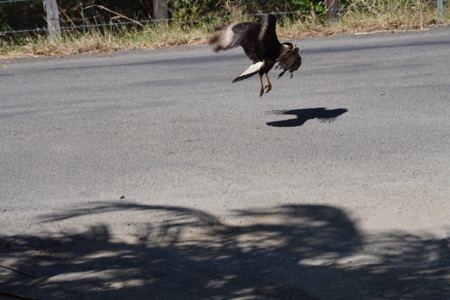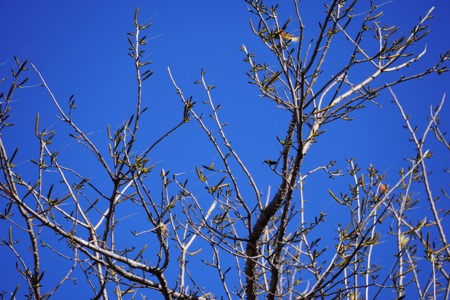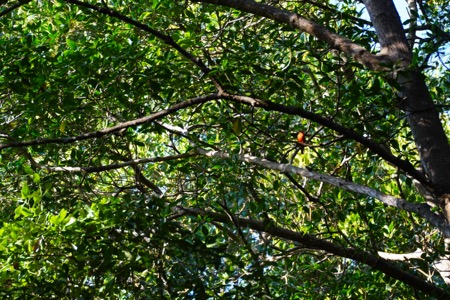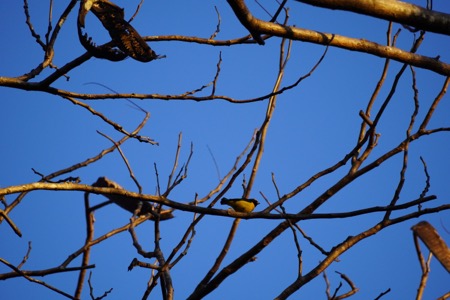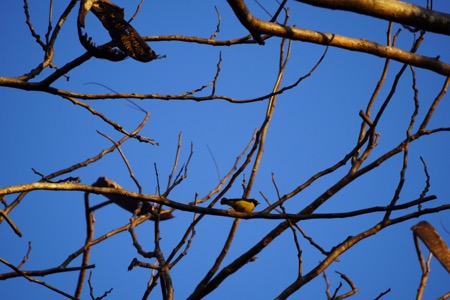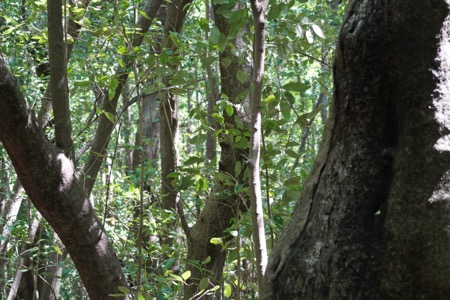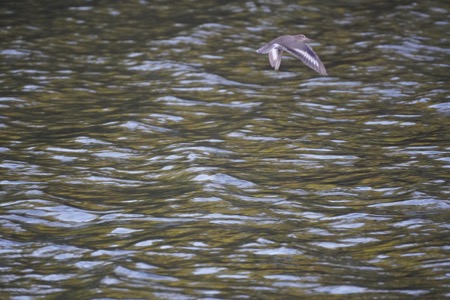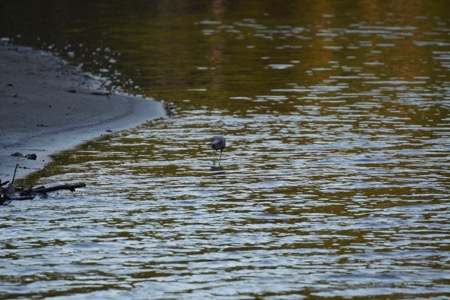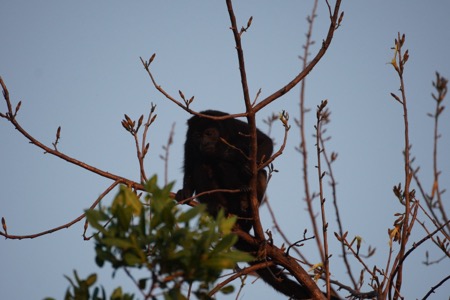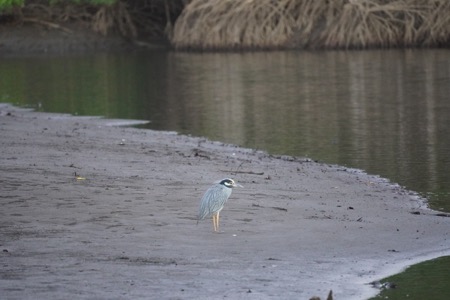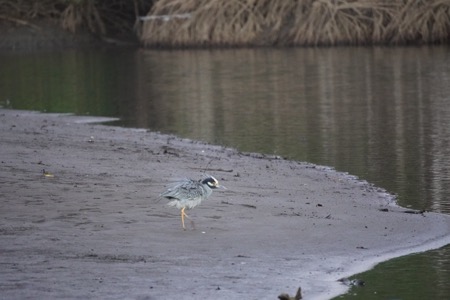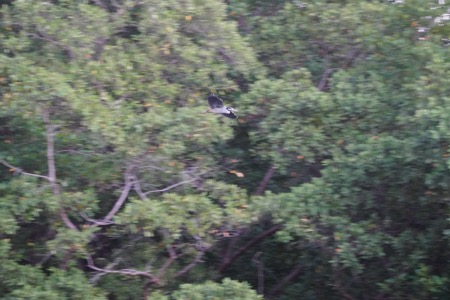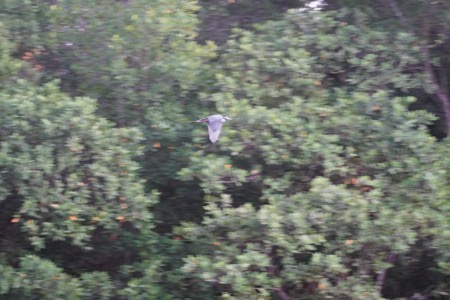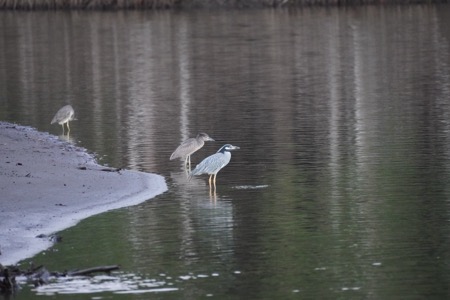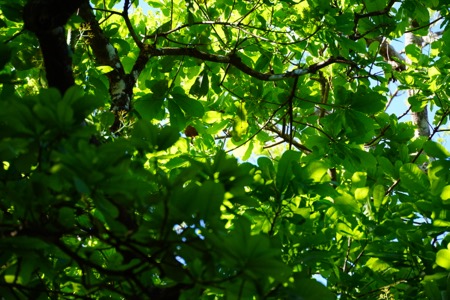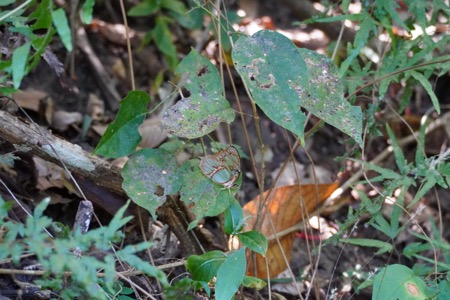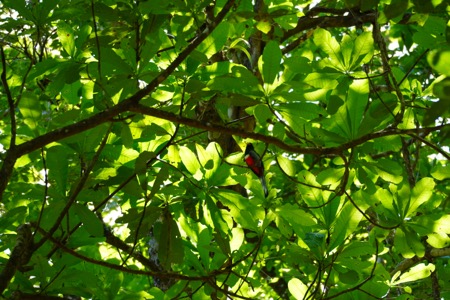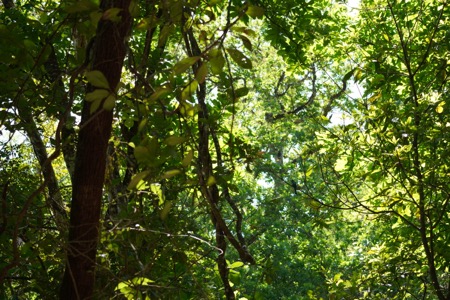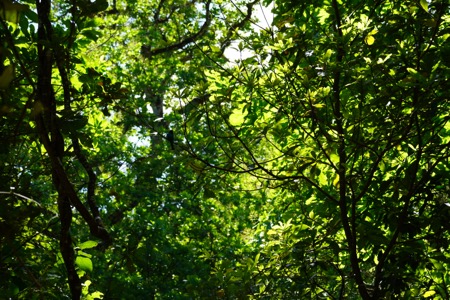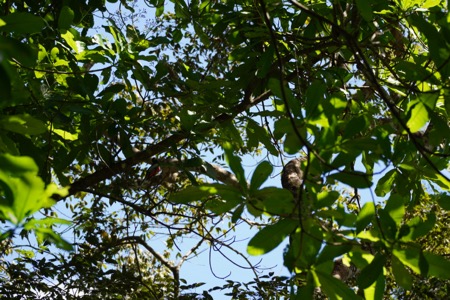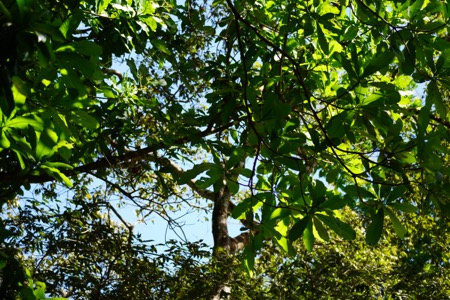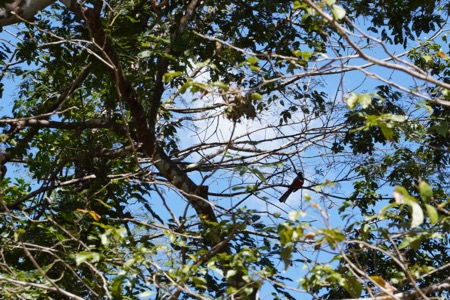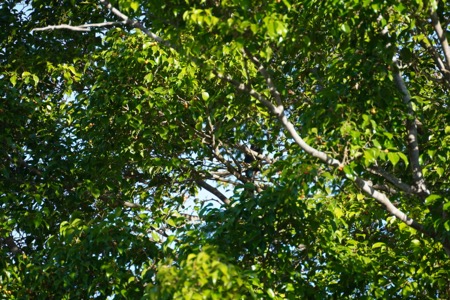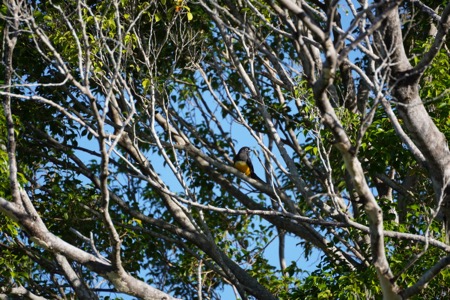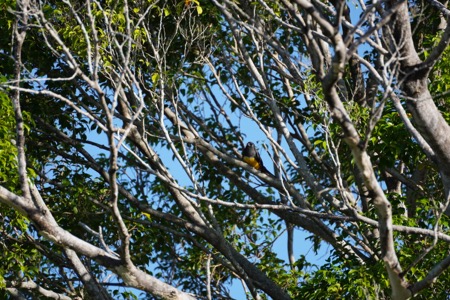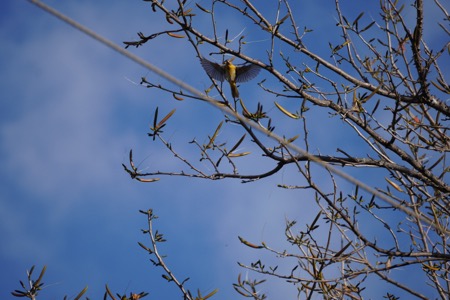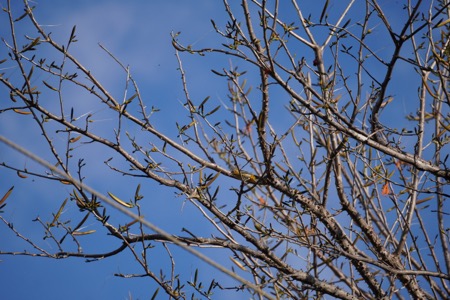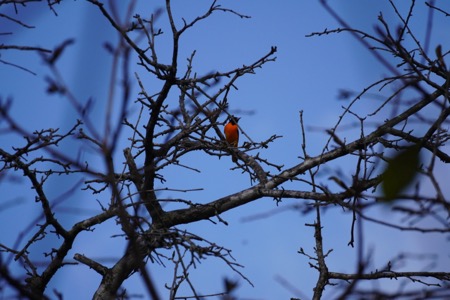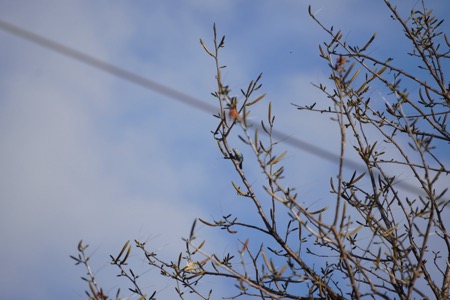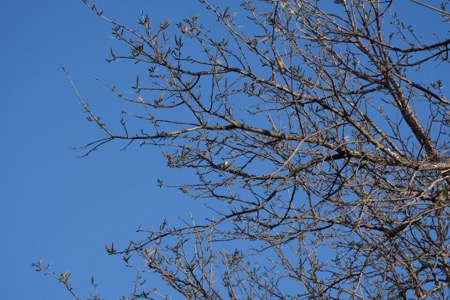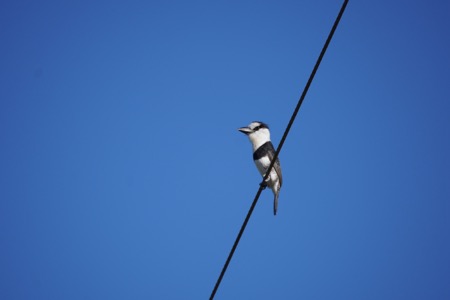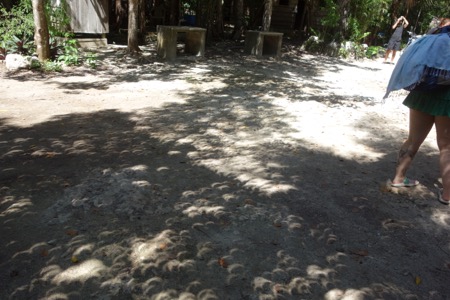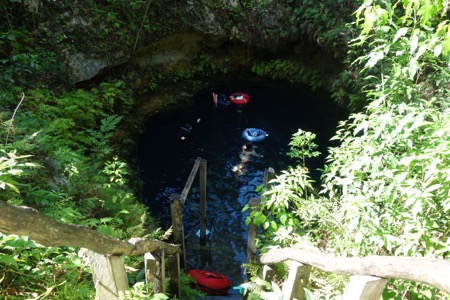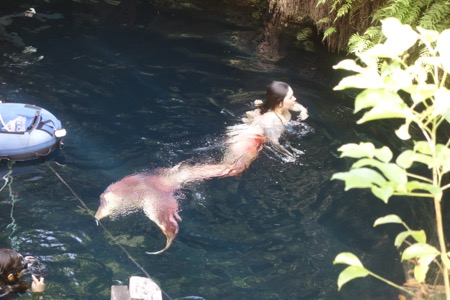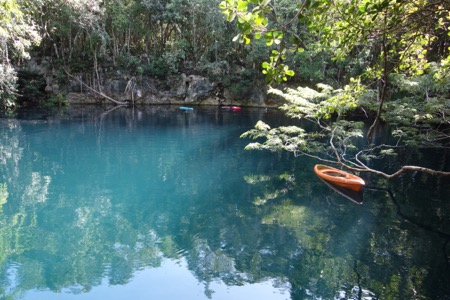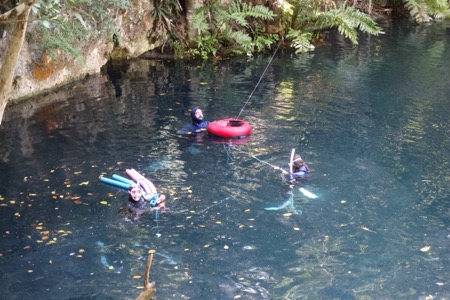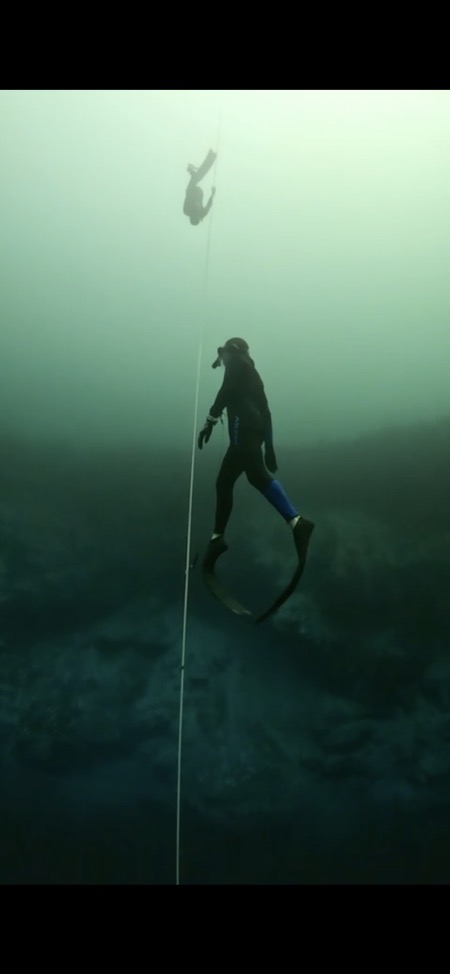I had the great fortune of playing with my father Ron Haack, Zain Mahmood, Maya Jonas-Silver, and Jin Wang in the 2025 Bridge Summer Nationals in Philadelphia.
The summer nationals is a ten day bridge event hosted every year in the states. Throughout the 10 days there are a bunch of various tournaments. Anyone interested in competing can join for just one day in a side game if that's all they're schedule allows. There's a few national events, which take place over 1-3 days, and each day you have to qualify for the next day. The biggest contest is the Spingold Knockout teams, which is single elimination and lasts almost the entire ten days. I went for the whole 10 days and played in various events with various partners.
On the first day I played a pairs game1 with my father. On one hand I played against a pro and client pair.2
I was declaring a nearly impossible contract of four spades, and having already lost three tricks I was faced with playing the trump suit for no losers. The dummy had AT, and I had K98743. So my only hope was to play the ace and king and hope for the queen and jack to drop doubleton.
I lead a low spade from hand towards the dummy, and the client went into the tank. After a minute of deliberation, she played low.
My best play on paper was to play the ace and the king as I had planned. But left hand opponent’s hesitation made me severely doubt that the right hand opponent was holding the QJ bare. It occurred to me that LHO may not know that she needed to split her honors and play either the queen or jack. So I finessed the ten, played the ace dropping the J, crossed to my hand with an outside entry, cashed the king dropping the queen, and claimed the rest.
Hands like these are why playing bridge in person is so much more fun than playing online. The human element adds color to the cold statistical game.
The next day I played in the NABC+ open pairs with Maya. She directs at Honor’s in NYC, one of the bridge clubs where my father used to teach and direct. She’s a great partner, the first time we played she was even willing to entertain playing the system my dad taught me where doubles after overcalls at the one level are for penalties! I think she was relieved that I had moved on to playing 2/1 and negative doubles.
This event was a two day duplicates qualifying event, which means after the first day the bottom half of the field is cut. Sadly we finished as the chaff rather than the wheat.
The next day I played in a single day pairs event with my dad. Naturally the competition was weaker since the pool was mostly the losers from the previous day’s two day event. We had an average result.
Although I am a relatively novice player, I have high aspirations and wanted to play against the toughest competition available. So I signed up for the Spingold to get a chance to play against some strong professionals. I partnered with Zain, and our teammates were my father and one of his old friends.
I had slept terribly the night before and my play reflected it. On one of the first hands I mistook my clubs for my spades and doubled a three NT contract to get a spade lead. Needless to say they made the contract with extras. At the end of the morning session we got a negative raw score on all but one or two hands. We had the following exchange with our opponents.
LHO: “I wish we were playing for money.”
Me:“You certainly would be able to go on a nice vacation!”
LHO: “Vacation? I’d retire!”
Beauty sleep would not have change the results. But I do know that going into my next tournaments I will have to work harder to get a good nights rest. Getting good sleep was such a struggle that I took the time to read half a book on the topic of falling asleep and dealing with insomnia. The major takeaways were:
1. Don’t get stressed about not sleeping. An I-don’t-give-a-fuck attitude is essential.
2. Make your bedroom as dark as possible. Cover up all those LEDs, make sure you have good blackout curtains, etc. You should not be able to see your hands.
3. Exercise as soon as you wake up, ideally in bright light.
The second match went a lot better, at least for my partnership. At the end of the first session of the second match, we were tied at 0 imps! The final result was decided against our favor. The swings came primarily from a couple of slam and grand slam hands, which our opponents successfully bid but our teammates did not.3
I loved playing in the Spingold. The best part is that you play against the same opponents for 30 hands. It gives you enough time to learn a bit about their style and their bidding system.
The following day I played in a one day swiss team event with Zain again as my partner and my dad and his girlfriend as teammates. We did pretty well in the morning session, yet finished with just a decent result by the end of the day (15/ 67th). We played one hand against one of the Wolpert kids and his young friend, which had a ridiculous auction. I can’t recall the specifics, but what I da remember is that the little shits psych and that when partner redoubles a minor suit at the 2 level it should be to play (as the rdbl is necessary to put one in game.)
On the following Wednesday I played with Zain in the Werner pairs. This was another two day qualifying event, but since he already had arrangements to play with someone else the next day, we were going to drop out regardless of whether we qualified. Well let's just say we didn't get the chance to drop out voluntarily!
Zain give me a great piece of advice for pairs, which was simply to fight tooth and nail to try to get a positive raw score. Pairs, he informed me, was about not getting zeros, and it’s damn hard to get a zero if you have a positive raw score.
I remember on one hand I blew a game because I took an unnecessary finesse in the trump suit to try to get an over trick. Truth be told, at the time I thought that I needed that trick to make my contract. But since the trump I was finessing against was the last outstanding trump, I could have left it in and forced the defense to ruff with a high trump, leaving me my own ruffing trick with my last trump in dummy.
The following day I played pairs with my dad. We got some mediocre score, either just below or just above 50%. On one hand we had some suspicious play by our opponents. As I was about to make my opening bid, my right hand opponent pulled a card out of their bidding box. Since I was the dealer and they were out of turn, I called for the director.
Our opponents claimed that they were just looking at the card (there’s some information about scoring on the back of the bidding cards.) So we let it go and the bidding continued, with my LHO bidding aggressively to the three level in hearts, a yet unbid suit. We doubled. "The dummy came down and, shockingly, RHO had an opening bid! We called the director again and he raised an eyebrow at the opponents. During our dispute my father kept referring to my RHO as a “she”4 which made the situation both hysterical and incredibly uncomfortable. We wound up setting 3H doubled five tricks, and I couldn’t restrain myself from informing the opponents that _we_ wound up making 3 hearts.
The next day I found myself on a five man team with my dad, his girlfriend, and Zain. Zain was partnered with a charming Italian woman. Zain and the Italian played both the morning and afternoon sessions, I played with my father in the morning and his girlfriend partnered with him for the evening. Boy was I happy to play only half a day, bridge is fucking exhausting. I took the afternoon off to go to the Philadelphia Museum of Art, pictures posted below.
Later in the evening I kibitz’d Zia Mahmood playing with his partner David Gold.5 I notice that he often fingers the card that he is anticipating to play next; it seems a good way to keep your head in the game. On one hand the opponents took a finesse against a king, and Zia was holding the K along with Txx offside. Zia slapped down the T without batting an eye, and the declarer put on the face of bewilderment. It made no difference to the hand, but it cost the declarer a lot of mental energy to figure out where the king was. After the hand, Zia turned to me and said something along the lines of, "sometimes in life you have to torture people."
Our team put up a valiant effort but we didn’t qualify, we were just shy a few victory points to make it into the next round. Still I was happy with our performance. We played against a lot of top teams, one of which wound up taking second place in the whole event.
The next Saturday I partnered with Jin on a team with my dad and his girlfriend. Again we had a mediocre result. I remember on one hand I let the opponents make an impossible 6 hearts. I had KJxx of hearts. All I needed to do was make sure declarer was on lead for the third to last trick. Well I failed to do that and they made their slam, which I assumed would cost us a bunch of imps, but my father and gf had found the actual sound six diamonds slam6 and so the board was flat.
On the final Sunday of the event, I played another day of Swiss teams with my father as my partner and a bitcoiner/bridge pro and his gf as teammates. While we only did slightly above average, I played some of the better bridge I’ve ever played. My dad and I were happy to end the event on a good note.
I loved the nationals and I hope to compete again soon.
~ The Art Musem ~
- Bridge evolved from the game Whist. Bridge was primarily played for money in a version known as rubber bridge. The game is interesting enough that people found joy in competition without monetary stakes involved. (unlike poker, a game that is a snoozefest without a buy in.)
Rubber bridge has a complex scoring system that needed some minor adaptations to be suitable for competitive play in a tournament with various partnerships. Rubbers involve playing multiple hands against the same opponents. At different times during the rubber the partnerships can be in different states (vulnerable, not vulnerable) and these states affect the scores they can achieve on the hand they're about to play.
Since a rubber takes a while to play, and since one's score depends largely on fate, most bridge clubs host their competitions in a variant called pair games aka duplicates aka matchpoints. In duplicates, a team is assigned a direction (i.e. N/S) and plays hands with predefined deals/states against pairs in the E/W direction. After the hand, pairs achieve a raw score, which is the points they would have won/lost had they played that hand in a rubber. How well a pair does in duplicates on a hand is based on their raw score relative to the other raw scores of the pairs sitting in their same direction who played the same hand. If you get a higher raw score than everyone else, you get a perfect score for the hand. It does not matter if you win by 10 points or 1000, all it matters is how many pairs you outperform.
The other popular variant of competitive bridge is teams. In a team game, you have 2 teamed up partnerships vs another 2 teamed up partnerships. You deal out hands with predefined states. Your teammates play the same hands as you do, holding the same cards that your immediate opponents held. Then you collect the raw scores from all the hands you played and compare them with your teammates' raw scores. Whether you win or lose is determined mostly by just adding up the raw scores and seeing if you have a positive number, with some tweaking (called the IMP.scale) to neutralize some of the variance on larger scoring hands.
There's two other popular variants as well, board-a-match and pairs with imp scoring. If you're this far into a footnote and interested in knowing what those are then that's great, leave a comment! [↩]
- Playing bridge is much more interesting if you have a good partner. It takes about 10 years of hard work to play the game at a reasonable level, and thus it's not easy to find a partner who knows how to play. Consequently, there are wealthy patrons who pay for a pro partner. Naturally, those partnerships have an imbalance in their skill levels. [↩]
- They were at each other’s throats in rage. [↩]
- in his defense, the whale of a person did look like a woman [↩]
- He's got some social media thing going on Eat Like Gold. He's a great bloke, we had a nice dinner together with some other bridge pros, some of whom knew my father. [↩]
- Which required dad's gf passing with a void in diamonds! [↩]
